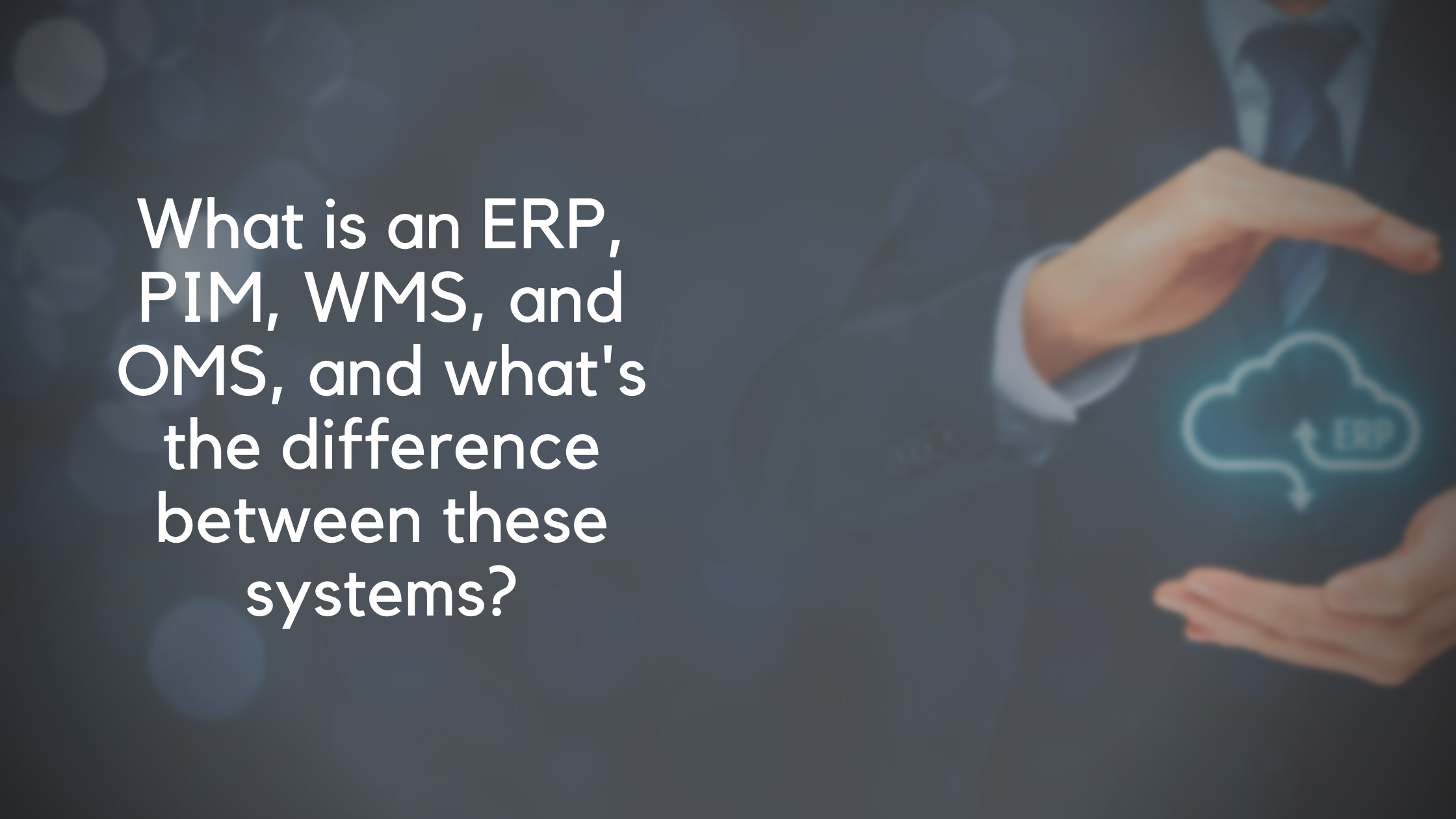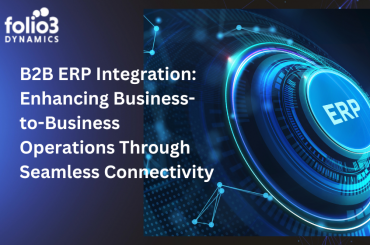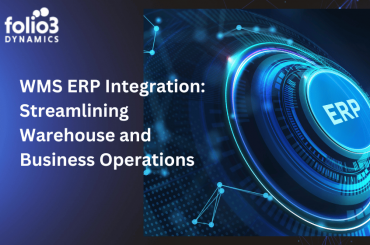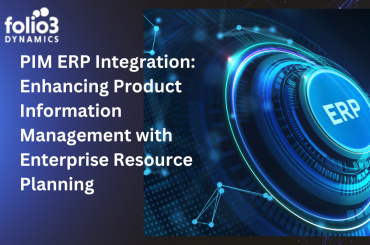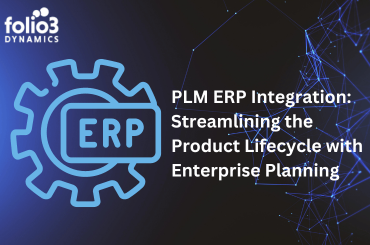ERP, OMS, WMS, and PIM are acronyms that one frequently hear within e-commerce. They are management systems that manage various activities of your business.
These systems have some common features, such as storing the product and prices content, information of customer, order, shipping, and fulfillment.
They all relatively perform the same function of using your website for integrating different parts of your business. Since they are similar, there’s often confusion around what each of these systems does.
To learn about the specifics of each system, continue reading:
What is an ERP?
Enterprise Resource Planning (ERP) is a process through which companies integrate and manage the various parts of their businesses.
ERP solutions are essential for companies to integrate all the processes necessary for running their companies using a single system.
An ERP application software can integrate sales, finance, marketing, planning, human resources, purchasing inventory, and more. The system also assists companies with implementing resource planning.
An enterprise resource planning software binds together different computer systems for large organizations. Without an ERP system, each department would have a specific system optimized for its distinct tasks.
With an ERP, each department in a company still has its system, but all of these systems can be integrated. Moreover, the different departments can be accessed through one system software with a single interface.
ERP applications also make communication and sharing of information easier between one department and the rest of the company.
ERP gathers information about different departments’ state and activity. The information gathered can be made accessible to other parts where it is utilized for other purposes.
What is a PIM?
Product Information Management (PIM), is a solution that provides a single platform for collecting, managing, and enriching the product information. Moreover, it creates a product catalog, and distributes it to other eCommerce and sales channel.
So, a PIM helps manage all the product information crucial for marketing and selling products through distribution channels. With PIM, it is easier and faster to create and deliver the best product experiences.
The internal organization creates this product data to execute a multichannel marketing strategy. To distribute this data, a hub that holds all of the product information, such as an ERP, can be used.
From this hub, PIM distributes the information to different sales channels. Be it print catalogs, e-commerce websites, or marketplaces like Google Shopping and Amazon, or social media platforms like Instagram.
PIM system handles product data that customers see. With this data, PIM supports multi-lingual information, multiple geographic locations. Furthermore, it conserve and modifies product information within a centralized product catalog.
It can scatter a business’s stock information throughout its departments. This makes it accessible to particular systems or employees instead of being available to all.
The information can be saved in multiple formats or only in hard copy form for detailed product descriptions with pricing or calculating compensation costs.
Product information management represents a centralized system for efficient data collection, product data maintenance, enrichment, data administration, and output.
What is an OMS?
Order Management System(OMS) is an electronic system that makes executing securities order cost-effectively and efficiently.
Dealers and brokers utilize order management systems to fill orders for many different types of safeties and track all those orders throughout the system.
As an OMS facilitates and handles the completion of trade orders, it is also known as trade order management system.
The orders are placed in the trading systems to ensure that a buy or sell order delivers securely in the financial markets.
OMS uses further include both selling and buying as it allows firms to manage the continuum of their trades. Moreover, it automates and organize investments over their portfolios.
An OMS receives and combines the comprehensive sales information from different channels, including- in-store, online, and call center. Some products may also be available for orders from multiple global areas and currencies.
Moreover, OMS updates product information and availability in real-time for both employees and customers.
Furthermore, it stores and manages a customer database including customer activity and contact information to help you identify your highly profitable customers.
In addition to this, an OMS provides inventory management algorithms to help you route an order to the correct warehouse and identify the best option to ship it.
What is a WMS?
The acronym WMS refers to Warehouse Management System. It is a combination of software and processes that help organizations administer and control warehouse operations- from entering of materials or goods in the warehouse until dispatching.
Being the center of inventory production and supply chain operations, warehouses hold all the materials used or produced in the manufacturing and supply chain processes- from raw stuff to finished products.
The purpose of warehouse management is to ensure that the materials and the goods move through the warehouses most efficiently and cost-effectively.
A WMS is responsible for handling many functions such as inventory picking, tracking, receiving, and shipping.
It also enables you to see your organization’s inventory anywhere- whether in a site or transit- at any time. A WMS can reduce the possibility of errors that may occur during the shipping of a product.
Additionally, the system can help a company fulfill orders more quickly and instantly find the ordered products inside the warehouse.
Finally, WMS software helps you create a paperless environment that manages and directs your employees on your products’ automated picking, carrying-away, and shipping.
What is the difference between an ERP, PIM, WMS, and OMS?
To understand the difference between ERP, PIM, WMS, and OMS, let’s compare them.
ERP vs. WMS
An ERP software automates all the departments within an organization, such as customer relationship management, accounting, and inventory management.
On the other hand, a WMS system optimizes inventory on the grounds of real-time information. Based on the historical data and the trends, it generates information to find the best location for each item.
A WMS is usually a stand-alone system, but it may integrate with other modules like customer relationship management and accounting to run.
In contrast to WMS, ERP is an integrated all-in-one system that facilitates data sharing among all functional areas. However, most of its capabilities are like those of WMS software, including tracking the entire process of picking, packing, and shipping inventory items.
ERP vs. PIM
The ERP operates as a central management system of a company to integrate all processes, services, and software- including the PIM. That is why the ERP system works as the heart of your organization as it gathers and combines all the data from all departments.
Compared to a PIM, an ERP’s scope is broader. Therefore, it is more sophisticated and expensive. When it comes to products, a PIM has more specified fields; for instance, more options for SEO and other channels.
Since ERP software has a sheer number of configurations, its integrations are more customized than a PIM. So, a product information management system may use feed from ERP software to provide users with basic product information.
ERP vs. OMS
While an ERP can be configured to manage functions similar to OMS, including storing, reporting, and routing orders, an OMS software is mainly designed for managing orders.
ERPs uses include being a general back-office solutions to handle supply chain, accounting, HR, wholesale, manufacturing, and more. So, an OMS can combine with an ERP to manage retail and e-commerce operations better than a general-purpose software solution.
OMS vs. PIM
While a PIM stores product information more like the database of your catalog does, an OMS handles order information providing a list of which customers have placed orders for which products.
As the PIM system focuses more on product content, integrating it with an ERP make sure that PIM automatically obtains data from it and ensures that your catalog information is always up-to-the-minute on any channel.
WMS vs. OMS
OMS and WMS mainly differ in terms of their scope: whereas most warehouse management systems focus on the processes inside or among the warehouses, an OMS manages all operations concerning orders and shipping.
These days, however, OMS and WMS are used combinedly as one system. While a WMS manages activities related to fulfillment and distribution, an OMS controls broader processes other than the fulfillment process.
Conclusion:
ERP, WMS, OMS, and PIM systems can be used separately or integrated together to streamline different areas of your business.
While they handle a specific activity of your company, they relatively operate in the same way. They help you manage almost every operation of your business- right from manufacturing products, updating product information on different channels, placing orders to managing warehouses and shipping orders.
As a business, you need to figure out which one best suits your need and how you can use them as separate or integrated systems for your specific needs.

